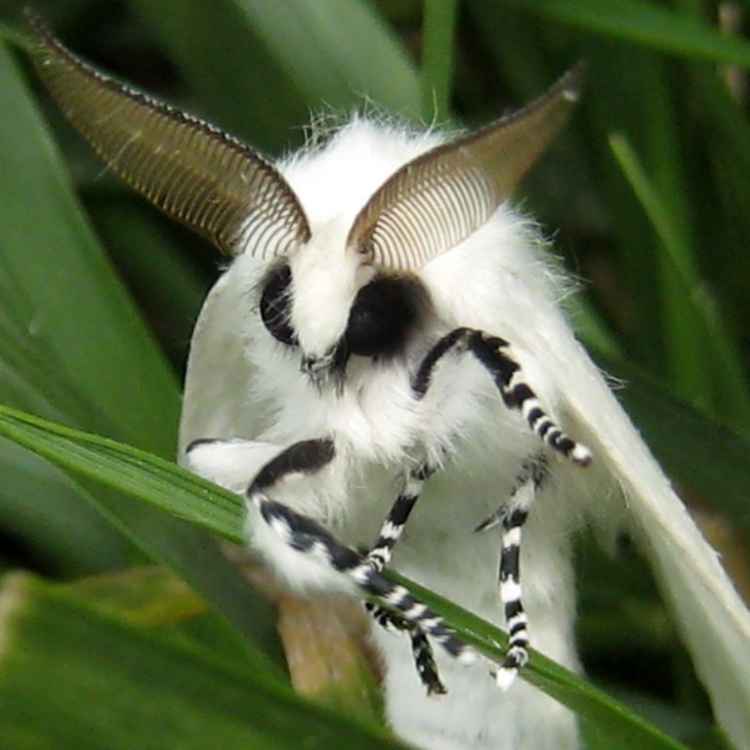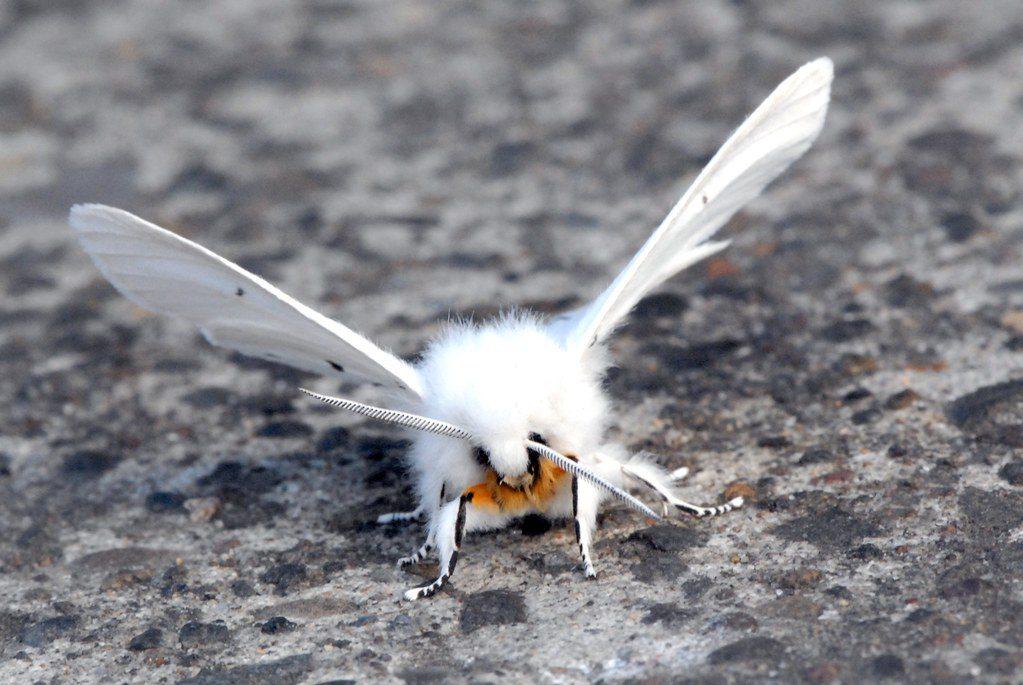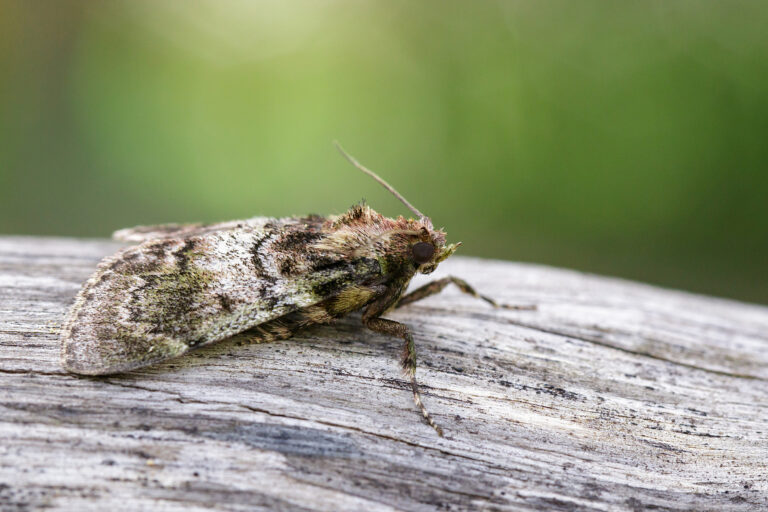Yes, moths, like many other insects, have a way to excrete waste, which includes a form of “peeing.” Moths, like butterflies, have a simple excretory system. They have a tube-like structure called a “malpighian tubule” that functions somewhat like our kidneys.
These tubules filter waste products from the moth’s hemolymph (the insect equivalent of blood) and then excrete them as a concentrated fluid into the insect’s hindgut.
This waste fluid eventually combines with other waste materials in the hindgut and is expelled from the moth’s body as feces. While moths don’t have a separate urinary system like mammals, their excretory process serves a similar purpose in eliminating waste from their bodies. So, in a way, you could say that moths do indeed “pee,” although it’s a different process compared to mammals
How does moth anatomy differ from mammals?

In the intricate tapestry of the animal kingdom, the contrast between moth and mammal anatomy stands as a testament to the astonishing diversity of life on Earth.
Moth Anatomy:
- Body Segmentation: Moths, like all insects, have a segmented body consisting of three main parts: the head, thorax, and abdomen.
- External Features: They possess various external features such as antennae, compound eyes, and mouthparts adapted for feeding on nectar or other food sources.
- Wings and Flight: Moths are known for their characteristic wings covered in scales, which give them their distinct appearance. These scales are often vibrant in color and can be quite beautiful.
- Reproductive Organs: The reproductive organs in moths are located in the abdomen and are responsible for mating and laying eggs.
- Legs and Appendages: Moths have six legs and may have additional appendages, such as specialized structures on their abdomen, which can aid in sensing their environment or releasing pheromones for communication.
The Circulatory System in Moths:
Open Circulatory System: Moths, like other insects, have an open circulatory system. In this system, a colorless fluid called hemolymph circulates throughout the body instead of blood.
Hemolymph performs various functions, including transporting nutrients, hormones, and immune cells.
Hemocoel: The body cavity of moths is called the hemocoel, and it’s where hemolymph flows. Unlike vertebrates with closed circulatory systems, insects do not have dedicated blood vessels. Hemolymph bathes the organs directly.
Heart and Aorta: Moths have a tubular heart and aorta that help pump hemolymph through their body.
Moreover, these structures are relatively simple compared to the multi-chambered hearts of vertebrates.
The Excretory System in Moths:
- Malpighian Tubules: The excretory system in moths primarily consists of Malpighian tubules, which are slender, tube-like structures located in the abdomen. These tubules play a vital role in excreting waste products from the hemolymph.
- Filtration and Concentration: Malpighian tubules filter waste materials, including metabolic byproducts and toxins, from the hemolymph. These substances are then concentrated into a fluid within the tubules.
- Connection to Hindgut: The concentrated waste fluid from the Malpighian tubules is transported to the hindgut, where it combines with other waste materials. This mixture eventually forms feces, which are expelled from the moth’s body through the anus.
What are Malpighian tubules in moths?
Malpighian tubules in moths are specialized excretory and osmoregulatory structures that play a crucial role in maintaining the insect’s internal balance of fluids and waste products.
Malpighian Tubules in Moths:
Structure and Location: Malpighian tubules are essential excretory structures in moths and other insects. These slender, thread-like tubes are typically found in the abdominal region of the moth, extending from the junction of the midgut and hindgut.
Filtration and Secretion: Malpighian tubules perform the crucial function of filtering waste materials from the hemolymph, which is the insect equivalent of blood. They also secrete various substances, including ions and metabolic waste products, into their lumens.
Selective Reabsorption: Unlike mammalian kidneys, which reabsorb essential substances like water and electrolytes, Malpighian tubules in moths do not have this capacity for selective reabsorption. Instead, they primarily remove waste and excess ions from the hemolymph.
Concentration: As waste products and ions accumulate in the Malpighian tubules, they create a concentrated fluid known as “primary urine” or “pre-urine.” This fluid is then transported to the hindgut.
Comparison to Mammalian Excretion:
Absence of a Separate Urinary System: Unlike mammals, moths and other insects lack a separate urinary system with specialized organs like kidneys and a bladder.
Instead, their excretory process is integrated into the digestive system through the Malpighian tubules.
Different Waste Elimination: In mammals, the primary waste elimination involves the production of urine by the kidneys, which is then stored in the bladder before being expelled through the urethra.
In moths, waste elimination involves the production of a concentrated fluid in the Malpighian tubules, which is combined with other waste materials in the hindgut and expelled as feces.
Hemolymph vs. Blood
| Characteristic | Hemolymph (Moths) | Blood (Mammals) |
| Transport System | Hemolymph is used. | Blood is used. |
| Composition | Does not contain red blood cells or hemoglobin. | Contains red blood cells, hemoglobin, and other components. |
| Circulatory System | No vessels; bathes internal organs directly. | Circulatory system with vessels (arteries, veins, capillaries). |
| Selective Reabsorption in Excretion | Limited selective reabsorption. | Extensive selective reabsorption in kidneys. |
| Valuable Substances Reabsorbed | Limited reabsorption of nutrients. | Reabsorbs valuable substances like glucose, amino acids, and water. |
Moth Excretory Waste Products:
Metabolic Waste: Moths, like all living organisms, produce metabolic waste products as a result of various cellular processes. These waste products include ammonia, urea, uric acid, and others.
Ions and Toxins: In addition to metabolic waste, Moth Malpighian tubules help eliminate excess ions (such as potassium and sodium) and toxins from the hemolymph, maintaining the insect’s internal homeostasis.
Formation of Feces: The concentrated waste fluid produced by the Malpighian tubules combines with other undigested waste materials in the hindgut, eventually forming feces.
Feces are then expelled from the moth’s body through the anus as a means of waste disposal.
How do moths concentrate waste fluid in their bodies?

Moths, like other insects, concentrate waste fluid in their bodies through the specialized excretory system known as Malpighian tubules.
Filtering Waste in Malpighian Tubules
Initiation of Filtration: The process begins when hemolymph, which contains various waste products and metabolic byproducts, enters the Malpighian tubules.
Moreover, these tubules act as a filtration system, selectively allowing certain substances to pass into their lumens while retaining essential nutrients and ions in the hemolymph.
Filtration Mechanism: Filtration in the Malpighian tubules involves a combination of active transport and passive diffusion.
Cells lining the tubules actively transport ions and other substances into the tubules, creating an osmotic gradient that drives the movement of fluids and waste products.
Waste Material Collection: As hemolymph flows through the Malpighian tubules, waste materials such as ammonia, uric acid, ions, and other toxins are separated from the hemolymph and deposited into the tubules’ lumens.
Furthermore, this process continues throughout the insect’s life, helping to maintain internal homeostasis.
Concentration of Waste Fluid
Formation of Primary Urine: The waste materials collected in the Malpighian tubules mix with the tubule’s luminal fluid, forming a concentrated waste fluid often referred to as “primary urine” or “pre-urine.” This fluid contains a high concentration of waste products and ions.
Selective Reabsorption: While the Malpighian tubules do not have the selective reabsorption capabilities of mammalian kidneys, some reabsorption of essential ions and nutrients may occur in the hindgut, as it is connected to the Malpighian tubules. However, this reabsorption is not as efficient or specialized as in mammals.
Concentration through Water Removal: One key mechanism in concentrating the waste fluid is the removal of water. Water is reabsorbed from the primary urine, leaving behind a more concentrated waste solution. In addition, this helps insects conserve water, which is especially important for species living in arid environments.
Expulsion of Waste from the Hindgut
Combination with Other Waste Materials: The concentrated waste fluid, along with undigested food particles and other waste materials from the digestive system, flows into the hindgut. In the hindgut, these waste products mix together.
Formation of Feces: In the hindgut, the concentrated waste fluid combines with the bulk of waste materials, leading to the formation of feces. Feces in insects often contain a mixture of undigested food, uric acid crystals, and other waste products.
Elimination through the Anus: The final stage of the excretion process involves the expulsion of the formed feces through the moth’s anus. This waste disposal mechanism effectively removes waste materials from the insect’s body, maintaining its internal balance.
FAQ’s
Do moths squirt liquid?
No, moths do not squirt liquid.
What liquid comes from moths?
Moths do not release any specific liquid as a defense mechanism or otherwise. They do not have defensive mechanisms like some other insects.
Are moths attracted to urine?
Moths are not typically attracted to urine. They are more commonly attracted to sources of light, nectar, or certain scents.
How often do moths poop?
The frequency of moth excretion, or “pooping,” can vary depending on factors like their diet and metabolism. It occurs as needed to eliminate waste.
What is the yellow liquid coming out of the moth?
There is no specific yellow liquid that commonly comes out of moths. If you see yellow fluid, it may be related to the moth’s internal processes, but this is not a typical behavior or characteristic.
Can you crush a moth?
Yes, you can crush a moth if you handle it, but it’s generally best to handle them gently to avoid damaging their delicate wings or scales.
Final Words
In conclusion, moths, like other insects, possess a unique excretory system that differs significantly from the more complex urinary systems found in mammals.
Their excretion process primarily relies on Malpighian tubules, which filter waste materials from their hemolymph, leading to the formation of a concentrated waste fluid known as “primary urine.”
Unlike mammals, moths lack a separate urinary system, and selective reabsorption of essential substances is limited. This concentrated waste fluid is then combined with other waste materials in the hindgut to form feces, which are expelled through the anus.

